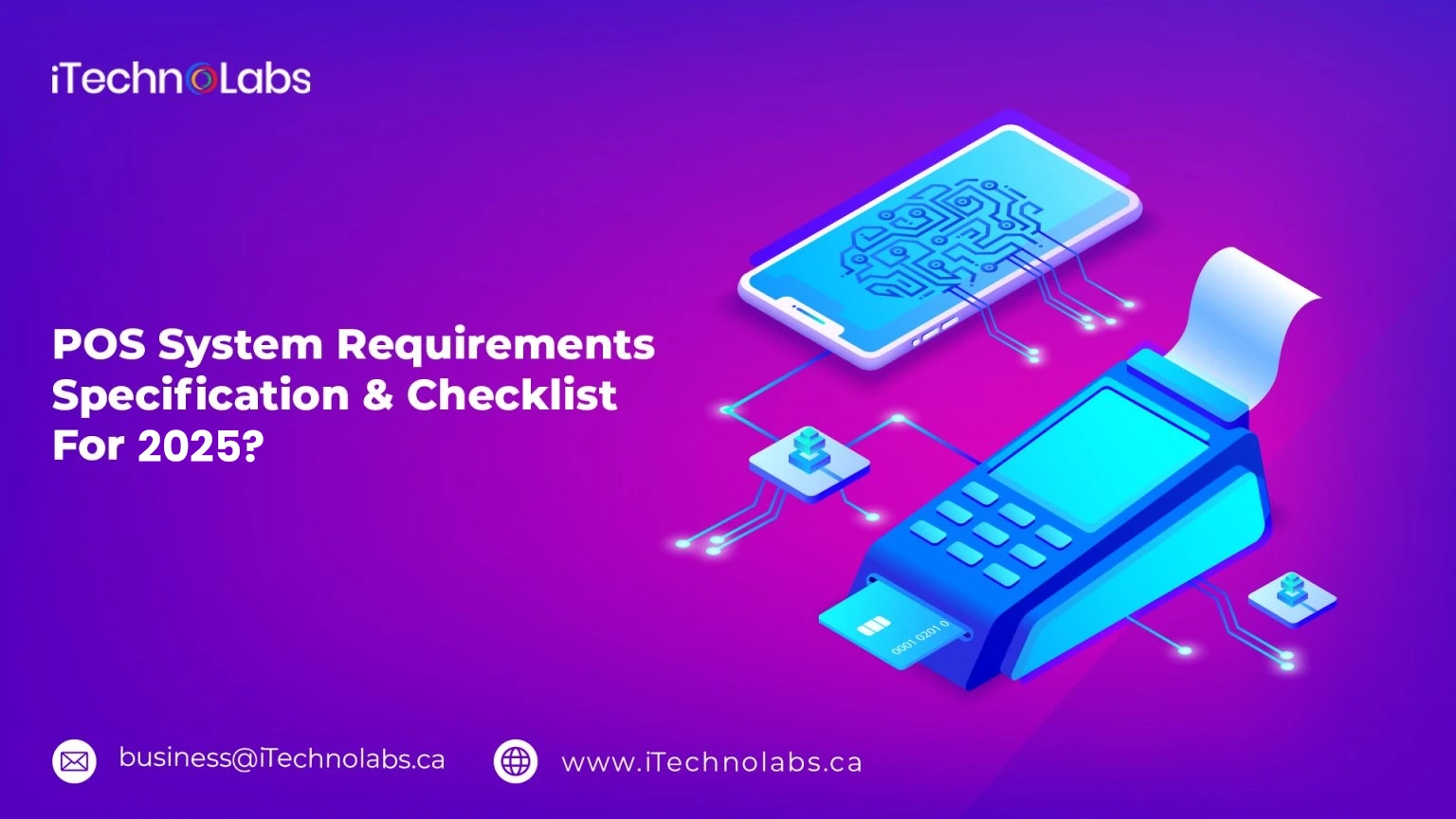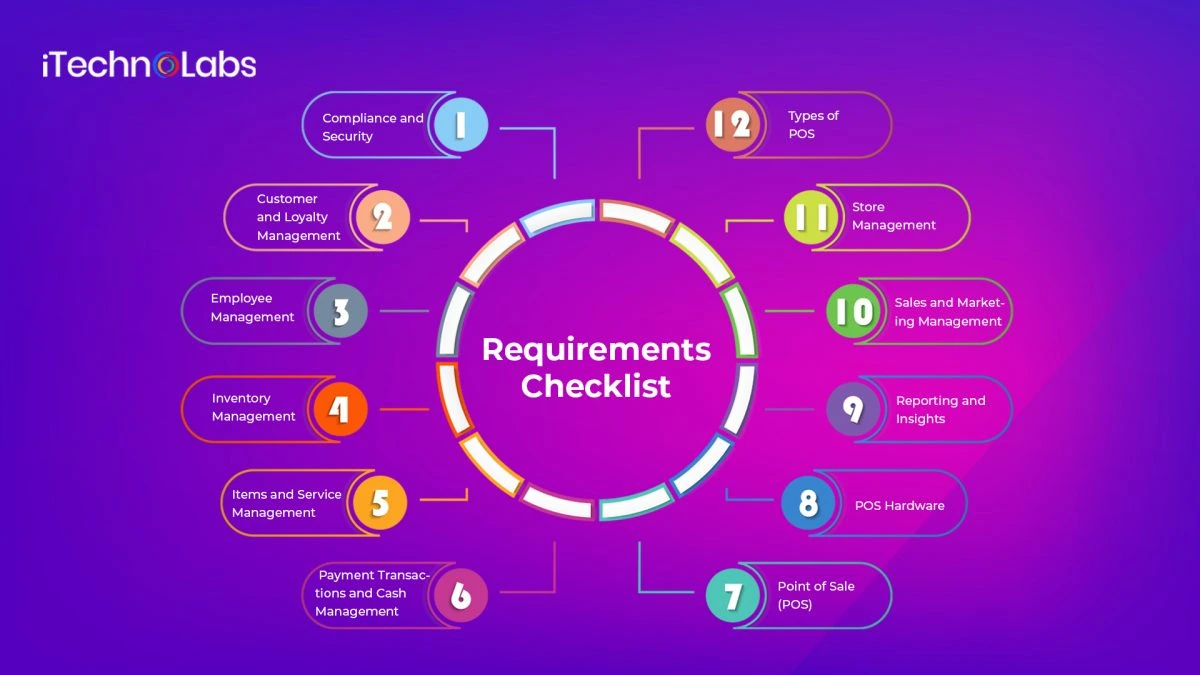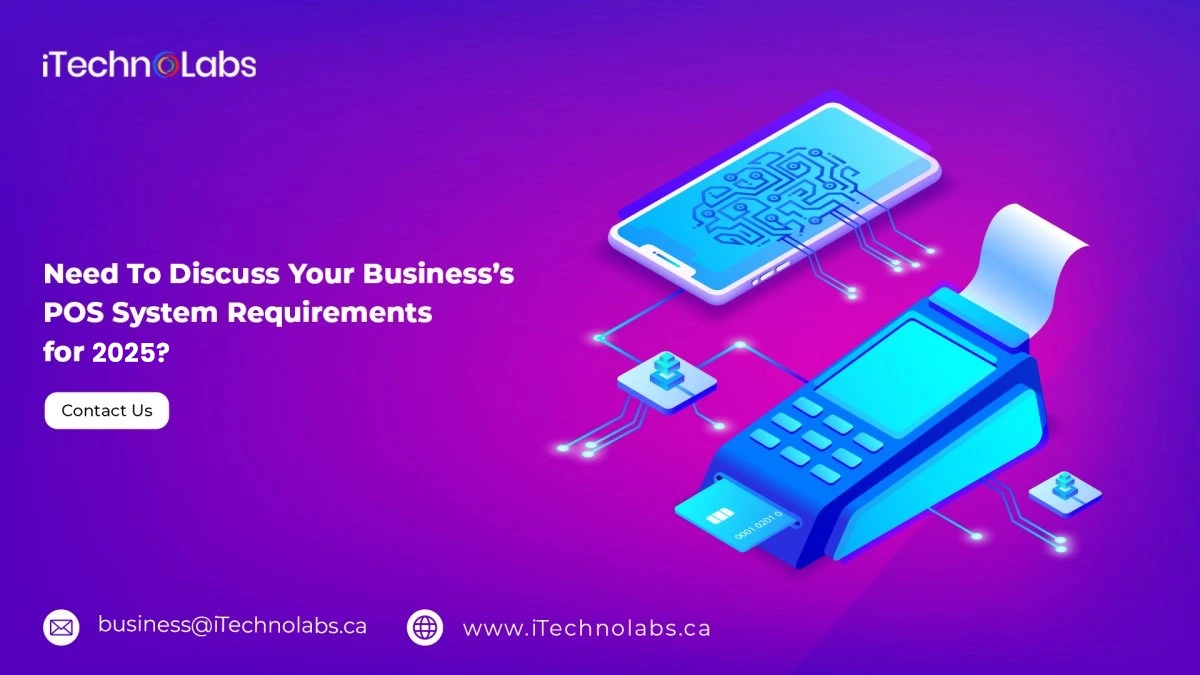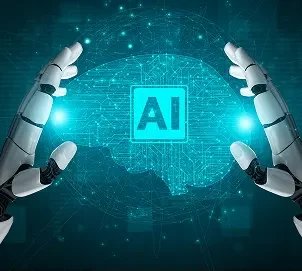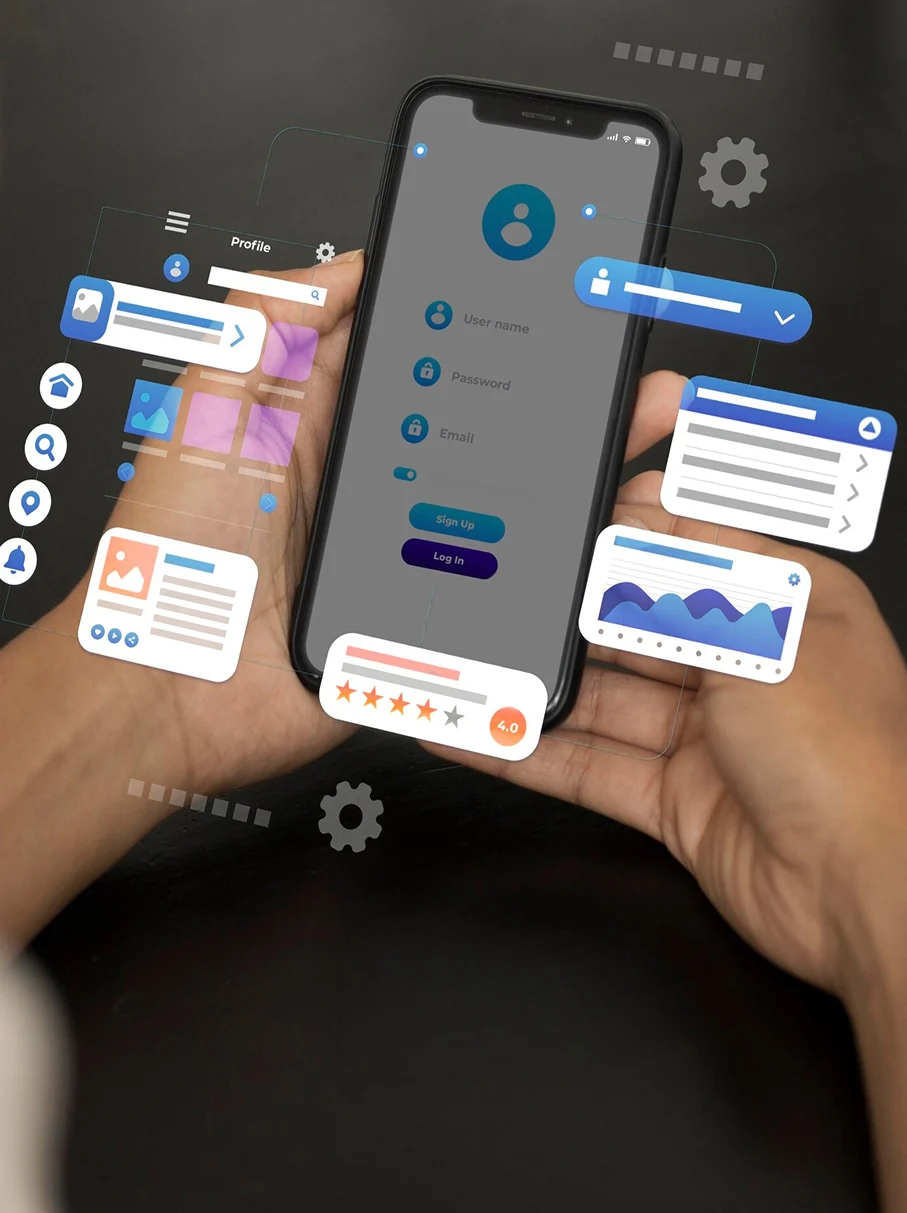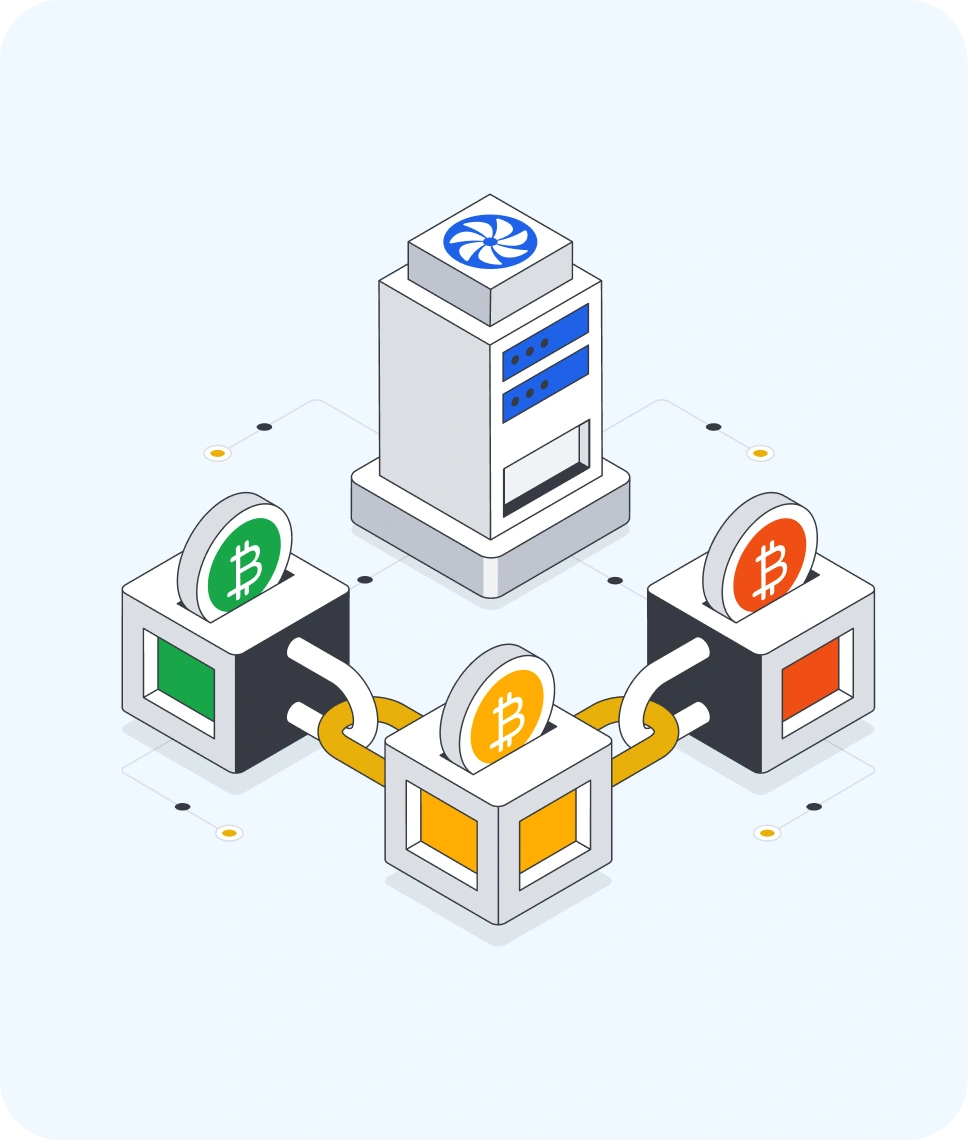Are you tired of tedious manual inventories? Are long lines slowing checkouts? Is internet lag interrupting your workflow? The POS solution is the ideal solution to solve your issues with business at a rapid pace, and the POS system requirements are something you need to be sure of in 2025.
It improves the speed of the payment process, relieves the burden off of your employees, professionally handles inventory, ensures that customers are satisfied, encourages collaboration across the entire team, and more, all to fulfill and enhance your business’s potential.
In 2025, the global Point of Sale (POS) market is projected to reach approximately USD 38.03 billion, growing at a compound annual growth rate (CAGR) of 15.38% from 2025 to 2033.
This growth is driven by the increasing adoption of cloud-based POS systems, rising demand for contactless payments, and advancements in AI-driven analytics, enhancing efficiency across various sectors, including retail and hospitality.
As businesses navigate this evolving landscape, understanding the essential POS system requirements becomes crucial to leverage these technological advancements effectively.
What is a POS System?
The POS system is a collection of software and hardware that assists in processing business transactions and overseeing back- and front-end store operations. It’s simply the place where consumers purchase goods and services and complete the transaction.
Its functions are the management of inventory, payment processing, customer relationship management, and reporting as well as analytics. It also includes workforce regulatory and sales tracking accounting and bookkeeping, all in a centralized platform.
Primary Benefits
A reliable POS system requirement has an array of user-friendly features and tools to help facilitate efficient business management. It streamlines daily operations as well as organizes data and makes it simpler to carry out everyday tasks, and it boosts the potential of your organization. Here are a few advantages you may take advantage of.
1. Saves Time
Reduce the need for manual inventory counts, lengthy processes, and lengthy data entry by using smart automation tools and integrated tools that accomplish essential tasks in a systematic and error-free way.
2. Improves Accuracy
Make transactions recordable, get regular reports on the most important business metrics, adjust the pricing of items, control financials for the business, conduct inventory counts, and complete other essential tasks using less intervention from humans and more technological accuracy.
3. Simplifies Operations
Control of stock capabilities to provide an efficient channel for inventory management, reducing the need for manual labor and keeping you up-to-date with the latest stock requirements. Create groups and send invoices to customers, highlighting important information like the amount of money spent for future use. Automated reminders are sent, scheduled tasks are created, digital reports are created, payroll is managed, and much more.
4. Enhances Performance
A POS lowers the risk of human errors, speeds up the process, and helps save time. POS system features include self-service kiosks with barcode scanners as well as automated inventory counts. employee scheduling, and much more. These systems perform tasks with precision and allow the employees more time to concentrate on customer service.
Get valuable insight into customer behavior and discover the advantages and disadvantages of your company to develop good business strategies using the help of a feedback system for customers. Third-party integrations add fuel to the chain and can improve the performance of the tools you already have and their functionality.
5. Boosts Revenue
Utilize branding and marketing tools to increase customer loyalty and draw new customers to boost the sales of your business and increase revenue. Automated tools reduce labor costs and make it easier to complete tasks. Save money on the creation of multiple job roles by using multi-store management in the same platform.
6. Increases Security
Backups of your data regularly, PCI-compliant payments, secure checkouts, and data encryption, as well as security updates for antivirus and software, ensure that customer and business data is safe from malicious hacks, cyberattacks, unauthorized access, and other security breaches.
Suggested Article: Zillow API Cost: Benefits & Factors To Use it
POS System Requirements Checklist
Are you having difficulty determining inventory? Do you require a tool to create report summaries? Marketing campaigns aren’t reaching their intended audience? Many demands and issues are encountered when running the business. The best POS can assist.
The POS is the brick-and-mortar of your retail store. Management of inventory, payment processing and invoicing, as well as reporting, branding, marketing, employee training, and management of customer relationships are just a few of the demands that affect your business.
You’ll require a comprehensive solution to run your business efficiently. With the best software in place, it’s easy to find new revenue streams as well as improve customer service and improve efficiency.
Here are the requirements for software that will strengthen your company as well as give your business a tech-driven transformation.
1. Compliance and Security
POS software development can protect your business from possible security breaches and cybercrime, data leaks, and cyberattacks. It blocks access to sensitive company information as well as secures personal data and creates the perfect environment to conduct transactions securely on the basis of a secure system that is foolproof.
Secure software on endpoints blocks cyberattacks and threats to security and protects devices used for work. Other than that, malware can exploit this device to steal or leak sensitive information. The principal objective of any security solution is to protect information and workflows connected to all corporate-connected devices securely. It is a way to ensure compliance with the GDPR, which is a set of guidelines that define strict guidelines for protecting the personal data of clients.
A secure network that is password protected prevents data leaks, and regular software updates stop unauthorized access to company information. Two-factor authentication, end-to-end encryption, and antivirus scans create sophisticated security measures. Securely process PCI DSS-compliant payment transactions and create an insurance plan for your debit or credit card transactions.
- Application Security
- Endpoint Security
- General Data Protection Regulation (GDPR) Compliance
- Infrastructure Security
- Operational Security
- Payment Card Industry Data Security Standard (PCI DSS) Compliance
- Payment Dispute Management
- Payments Fraud Protection and Monitoring
2. Customer and Loyalty Management
Monitor your customers’ transactions and web activities to understand their preferences and purchasing patterns. Create custom profiles that centralize information about gender, age, and location, as well as purchase history, total expenditure, and other relevant information to create customized promotions and appealing offers.
According to Retail Consulting Partners’ 25th Annual Customer Engagement, Unified Commerce & POS Survey Report, 54% of retailers have ranked expanding and enhancing the customer experience as their top business priority for 2025. This underscores the growing emphasis on customer service as a central component of retail strategy. To assess the effectiveness of your customer marketing strategies, it’s crucial to analyze data-backed reports that reveal the most and least performing items, identify loyal customers, and review total sales, among other insights.
Expand your business by incorporating customer-centric features such as special offers or loyalty programs based on points and rewards. Customers can pay with gift cards, use discounts when they pay, make use of personal coupons, and take advantage of great deals to provide the most affordable and satisfying shopping experience.
- Customer Database Management
- Customer Insights
- Electronic Gift Cards
- Link Transactions to the Customer Profile/Account
- Manage Promotions and Coupons
- Physical Gift Cards
- Points-based Loyalty Program
- Send Promotional Messages
3. Employee Management
A central staff management system increases the efficiency of your workplace and encourages team collaboration. Time clocks enable employees to track their working hours and keep records of their daily activities. You can track team performance and review daily task lists by using the activity log and also create schedules using the digital calendar.
When we look towards POS system requirements, a variety of POS software offers training tools to assist employees with developing working skills and boosting performance. Get a summary of employee activities as well as overall performance and the amount of revenue earned. You can also recognize top performers for improving retention.
It is possible to define policies for the company as well as process payroll and add tips, assign user privileges, distribute benefits to users, and perform other tasks that are essential to managing labor using an encrypted platform.
- Assign Staff to New Location
- Employee Scheduling
- Labor Hours Tracking
- Manage Employee’s User Permissions
- Set Daily, Weekly, and Monthly Sales Targets
4. Inventory Management
A well-equipped inventory management system boosts your company’s profitability. Monitor your inventory and supply levels, update and add taxes, monitor the status of orders, and make return requests with ease. Classify products based on certain features, including descriptions and pictures for each item, track sales, and more to control the supply chain network effectively.
Find products by scanning barcodes Assign serial numbers and label items using specific markers to reduce tedious data entry as well as human errors. Turn off notifications so that you are notified in real-time regarding low stock or new orders, reminders for refills and expiry dates, items allocated, and much more.
Keep up-to-date with real-time and data-driven reports on the total profit, year-over-year growth in stock profitability, and total sales. In-depth information on forecasts for inventory as well as trends in shipment and purchase orders can help you organize the business process and help you make more informed choices.
- Customizable Taxes
- Duplicate and Create Similar Products
- Import, Create, and Print Barcodes and Labels
- Inventory Counts and Control
- Low-stock Notifications and Auto-order Suggestions
- Product Catalog and Import
5. Items and Service Management
Control inventory quickly by importing bulk items. Create, edit, and erase groups of basic items with spreadsheets without having to do each step one at a time. Designate categories for products and services, organize the inventory according to departments and labels, including serial numbers, include pictures, write descriptions, and more using a logical platform.
Recommend items you have recently seen and list products that are similar, including discount coupons and more, in a user-friendly display. Control delivery with the ability to separate orders, live tracking and online menu updates, fast payment processing, and many more.
- Bulk Item Import
- Itemized Refunds
- Item/Service Categories
6. Payment Transactions and Cash Management
Improve your financial efficiency with a complete cash and payment management program. Cash transactions are handled, and you can print and issue receipts as well as invoices. You can also manage cash outflows and inflows and allow customers to apply discounts at the end of their checkout.
Get bank statement copies, and approve refunds and voids. Record total expenses in the cash register, and create detailed reports to help you know your financials better. Learn about the most popular customer transactions and get immediate notification of any payment errors.
According to McKinsey’s 2024 Digital Payments Survey, 92% of U.S. consumers reported having made some form of digital payment over the past year, marking a new high in adoption. To accommodate this growing preference, businesses should accept payments via debit and credit cards, magnetic stripe readers, store credit, gift cards, and more. Utilizing NFC-enabled readers allows for seamless transactions through digital wallets such as Google Pay and PayPal.
Print receipts can be provided or sent by email. You can also permit customers to provide tips to employees during the checkout process.
- Cash Handling and Monitoring
- Customized Invoices
- Digital or Printed Receipts
- Discount Management
- Offline Mode
- Payment Types
7. Point of Sale (POS)
Perform transactions in retail easily and let your business grow unhindered through a seamless point-of-sale system. As per your POS system requirements, you can also book items and permit customers to pay in installments following making a partial payment of the transaction’s total value. You can also apply the payment to sales on account. Monitor the status of your payments, make deposits, calculate the amount due, track outstanding balances, collect payments, view sales summaries, and more on an intuitive dashboard. Automatically send invoices and statement previews to customers to keep track of the user’s activities.
- Layaway/Layby Sales
8. POS Hardware
Processing transactions and driving sales with a variety of hardware options that allow for seamless software operation. Touchscreen monitors let employees navigate through the computer with the stylus or finger and reduce time by digitizing essential tasks.
Accept payments via credit cards as well as other contactless payment methods using advanced terminals for cards, store cash in drawers for cash Print receipts and labels with printers, and more, using sophisticated hardware equipment.
- Barcode Scanner
- Card Payment Terminal
- Cash Drawer
- Label Printer
- POS Register
- Receipt Printer
9. Reporting and Insights
POS analytics can provide a collection of information about the business processes using real-time information collected from various sources of company information, such as the activity of employees, transaction history, sales volumes, information about customers, and much other information. In-depth reports provide information from essential business segments like profit margins, total sales, and the performance of inventory; marketing data such as employees’ profiles, customer profiles, and the revenue that is earned.
Utilize a variety of business intelligence and analytical tools to help you understand your company and take data-driven business decisions that will help you grow more effectively. Monitor employee performance, determine high-performing and low-performing products, uncover marketing insights, highlight the weaknesses in your organization, and much more using improved reporting capabilities.
- Cash Flow Report Tracking
- Employee Sales Performance
- End-of-Day Reports (Register Closure Reports)
- Inventory Reports
10. Sales and Marketing Management
Grow sales and increase your business by implementing a sound marketing plan. Make use of methods like signs, sales hints, and receipts to show products. Display items that are popular to attract customers. Place items on a counter to attract attention to the most frequently sold items.
The program lets you design email marketing campaigns by using a global contact list that allows you to send promotions, including store updates, discounts, or coupons, as well as other details in large quantities.
Enhance the exposure of newly added products, post them through social media platforms, and offer discounts to boost branding and expand the number of customers. Examine buying patterns and consumer psychology to better understand their buying decisions and help facilitate suggestional selling.
And you can generate sales reports which are based on live data, to know what are the most popular products, profit margins and your company total revenue. Being able to monitor these is a great way to measure your sales progress, as well as help you make informed decisions.
11. Store Management
Integrate stores’ offline as well as online operations to ensure more visibility and an improved customer experience. Introduce or import new products as well as suppliers to guarantee availability across all stores. Show products in the store online to assist customers in making a smooth buying decision.
Provide exchange and return options online to cut down on manual processes. Instantly refunds are issued to the payment method used originally upon receipt of the return of the item(s). Monitor the number of items in your inventory according to availability and display up-to-date prices on a single screen, creating a user-friendly interface.
- Import stock From Physical Stores to Ecommerce
- Returns and Exchange Management
- Shipment Organization
12. Types of POS
Select the best POS solution based on key elements like business location needs, hardware and software requirements, and the total budget, as well as back- and front-end operations and many other aspects. The mobile POS system is great for companies with less inventory, while tablets have minimal upfront expenses and assist in managing complicated inventory systems.
Different kinds of POS systems can cut down time on processing payments and also facilitate quicker checkouts, but it depends on your POS system requirements which one you will choose.
Terminal-based POS are one-stop solutions that incorporate hardware with 24/7 support, cloud backup, online ordering, and payment processing. Multi-channel POS allows for sales across different stores and sells goods from different stores.
- Cloud POS
- Counter-based Touchscreen POS
- Multi-channel POS
- Online POS Like E-commerce
Also, read: How to create a Cross-Platform Stock Trading App Using Flutter
How to Choose a POS System
There is a variety of POS software available, and deciding on the best solution from the myriad of options isn’t easy. A variety of factors must be considered when making your decision-making process, including how big your company and budget are, as well as the industry type and the method of implementation.
Here are some points to consider when searching for POS systems:
- Find the issues: The first step to finding an answer is to identify what you want it to provide for you. Be aware of what your current procedures are not working and how they impact your company’s performance. This will assist you in determining the POS functions of the system that should be addressed to solve your issues.
- Create the requirements: Come up with the features you want in the software.
- Study well-known platforms: Look at different options available to find out the options available and how they compare.
- Compare alternatives: Prepare a comparison chart to assess the options by factors such as the number of features offered, price security, user feedback, and scalability capabilities.
- List of Shortlists: Reduce your choices to only include the most popular three or five software choices that best suit your needs. At this point, it may be beneficial to read the reviews of entrepreneurs and market research on the products to help you determine what’s right for you.
- Demonstrate the software: Ask the vendor for a no-cost trial to try the software and find out the way it can work for your company.
Need To Discuss Your Business’s POS System Requirements for 2025?
Conclusion
Whether you’re running a quaint café, a thriving retail store, or a corner salon, a solid POS system can be the invisible workhorse behind your business. It is flexible to fit the needs of your business, is efficient enough to help streamline your day-to-day operations, and gives you the power to do what you do best—provide great service. Efficiency is no longer a bonus in 2025 — it’s a must. A new POS system is the instrument you need to leave the mess of manual transactions behind, raise customer satisfaction and get the live statistics that will enable smarter business decisions in your management room.
As your business evolves, so should your technology. A future-ready POS system ensures you’re not just keeping up—but staying ahead.
Also, read: How Much Does 3D Game Development Cost in 2025?
FAQs
1. What are the specs for a POS system?
POS system specifications typically include a touchscreen monitor, barcode scanner, receipt printer, cash drawer, and a robust processor (Intel i3 or higher). It should have at least 4GB RAM, SSD storage, USB/HDMI ports, and a stable OS like Windows or Android, depending on the software compatibility and industry requirements.
2. What are the requirements for POS?
POS system requirements include both hardware and software essentials: a reliable internet connection, compatible operating system, POS software, and devices like a monitor, scanner, and printer. Additionally, compliance with data security standards, seamless integration with payment gateways, and cloud or local data backup features are crucial for smooth and secure operations.
3. What are the 4 types of POS systems?
The four main types of POS systems are:
- Terminal POS – Hardware-based systems for retail stores.
- Mobile POS (mPOS) – Smartphone or tablet-based for on-the-go transactions.
- Cloud-based POS – Online systems accessible from anywhere.
- Self-service Kiosks – Customer-operated systems in fast food or retail.
Each suits different business models and needs.
4. What are the key features of the POS system?
Some of the main functionalities of POS system are inventory management, sales tracking, employee management, CRM (customer relationship management), analytics, and multi-payment processing. Sophisticated systems also have loyalty programs, cloud and offline capabilities, eCommerce platform integration, and are designed to give businesses full control over transactions and operations from start to finish.
5. What are POS standards for?
POS standards also promote security, interoperability and efficiency on both hardware and software levels. These could be encompassed by hardware alignment, software data structures, and even PCI DSS (Payment Card Industry Data Security Standard) conformance. Standards dictate how a POS system processes transactions, stores customer information and integrates with other software, which ensures its reliability and compliance with the law.

